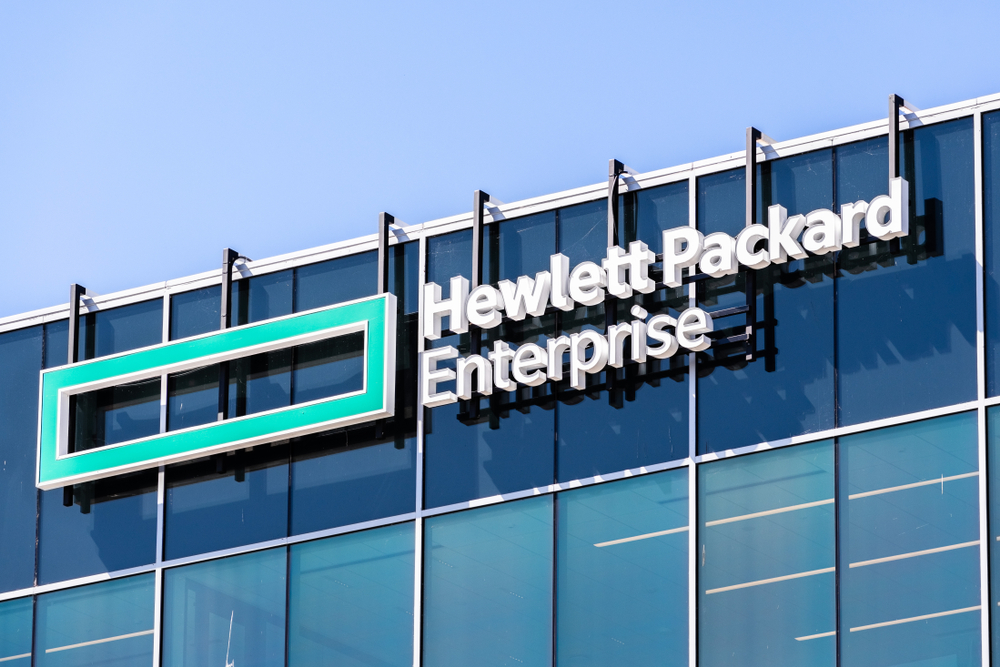HPE losses pinned on Intel chip shortages and COVID-19
Revenue dipped in the first quarter of 2020 as a months' long CPU shortage continues to bite


HPE has reported that its year-on-year revenues for the previous quarter have declined by 8% due to difficulties in its compute business, led primarily by the continued shortage of Intel processors.
Net revenues recorded for the first quarter of 2020 were $6.9 billion, falling from the $7.5 billion recorded during the same period last year. The main culprit was a 15% decline in HPE’s compute business, with “manufacturing capacity constraints” causing income to drop by $3 billion year-on-year.
The company has hinted this is due to several global issues, including the recent worldwide coronavirus outbreak, although HPE’s financial results underperformed against analyst estimates regardless.
The company has also suggested the need to address a string of challenges, including competitive pressures, risks associated with executing HPE’s strategy, as well as unforeseen events such as the spread of the virus.
“HPE’s first-quarter results demonstrate continued progress against our strategic priorities to shift our company to higher-margin and more recurring revenues against a dynamic market backdrop,” said HPE’s president and CEO Antonio Neri.
“While our overall revenue declined for the quarter, primarily due to our Compute business, we grew our ARR by 19 percent and saw profitable growth in key areas of investment, including Intelligent Edge, High Performance Compute, Hyperconverged Infrastructure, Big Data Storage and Operational Services orders.”
“Faced with continued macro uncertainty, I am confident we are managing our business with discipline and focus, taking the right actions, and advancing our pivot to deliver unique edge-to-cloud experiences as a service. We believe the combination will drive long-term profitable growth and strong returns on investment.”
Get the ITPro daily newsletter
Sign up today and you will receive a free copy of our Future Focus 2025 report - the leading guidance on AI, cybersecurity and other IT challenges as per 700+ senior executives
Intel shortages have been present throughout the market for many, many months, with a string of companies previously blaming their poor financial performances on the lack of supply of chips.
The company previously apologised for being unable to meet “strong demand” for its CPUs in November 2019, also pledging to invest in capital expenditure to ramp up production.
Last year, for example, Microsoft blamed Intel for a drop in the sales of Windows machines, while in November, Dell slashed its 2020 forecast over fears that the shortage of Intel chips would continue to lead to declining PC shipments.
While HPE’s compute business suffered, a number of smaller areas of the business saw better fortunes. The intelligent edge division grew 4% year-on-year to record $720 million in revenue, for example, while high-performance compute and mission-critical systems grew 6% year-on-year, hitting $823 million for Q1 2020.
Performance in these areas, however, was not strong enough to offset the losses in areas such as financial services, which declined 6% year-on-year, as well as storage, which was down 7% despite recording $1.3 billion in revenue.

Keumars Afifi-Sabet is a writer and editor that specialises in public sector, cyber security, and cloud computing. He first joined ITPro as a staff writer in April 2018 and eventually became its Features Editor. Although a regular contributor to other tech sites in the past, these days you will find Keumars on LiveScience, where he runs its Technology section.
-
 Bigger salaries, more burnout: Is the CISO role in crisis?
Bigger salaries, more burnout: Is the CISO role in crisis?In-depth CISOs are more stressed than ever before – but why is this and what can be done?
By Kate O'Flaherty Published
-
 Cheap cyber crime kits can be bought on the dark web for less than $25
Cheap cyber crime kits can be bought on the dark web for less than $25News Research from NordVPN shows phishing kits are now widely available on the dark web and via messaging apps like Telegram, and are often selling for less than $25.
By Emma Woollacott Published
-
 Who is Fidelma Russo?
Who is Fidelma Russo?Learn more about HPE's CTO and leader of GreenLake's success
By Nicole Kobie Published
-
 Everything you need to know about Lip-Bu Tan, Intel’s new CEO
Everything you need to know about Lip-Bu Tan, Intel’s new CEONews Intel has announced its next CEO in the wake of Pat Gelsinger's retirement, naming former board member Lip-Bu Tan as its new leader months after he quit.
By Nicole Kobie Published
-
 Intel CEO Pat Gelsinger announces retirement
Intel CEO Pat Gelsinger announces retirementNews Gelsinger’s departure comes amid a tumultuous period at Intel
By Ross Kelly Published
-
 Steady progress and partner potential at HPE Discover Barcelona 2024
Steady progress and partner potential at HPE Discover Barcelona 2024Analysis With few product announcements, HPE's annual Europe event instead laid the groundwork for 2025
By Jane McCallion Published
-
 HPE launches exclusive sovereign cloud offering for the channel
HPE launches exclusive sovereign cloud offering for the channelPartners will need HPE Sovereignty competency before they can start selling
By Jane McCallion Published
-
 HPE Discover Barcelona 2024: All the news and updates live
HPE Discover Barcelona 2024: All the news and updates liveLive coverage of the keynote at HPE Discover Barcelona
By Jane McCallion Last updated
-
 What to look out for at HPE Discover Barcelona 2024
What to look out for at HPE Discover Barcelona 2024Analysis Hewlett Packard Enterprise’s European conference opens on 20 November – here’s four announcements I expect to see
By Jane McCallion Published
-
 AMD to cut around 1,000 staff to focus on "growth opportunities"
AMD to cut around 1,000 staff to focus on "growth opportunities"News The AMD layoffs come after rival Intel cut staff on the back of flagging AI returns
By George Fitzmaurice Published